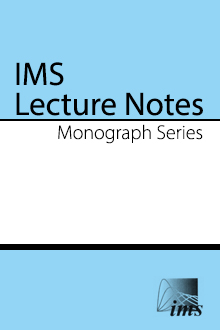Abstract
This paper is concerned with the statistical development of our spatial-temporal data mining procedure, LASR (pronounced ``laser''). LASR is the abbreviation for Longitudinal Analysis with Self-Registration of large-$p$-small-$n$ data. It was motivated by a study of ``Neuromuscular Electrical Stimulation'' experiments, where the data are noisy and heterogeneous, might not align from one session to another, and involve a large number of multiple comparisons. The three main components of LASR are: (1) data segmentation for separating heterogeneous data and for distinguishing outliers, (2) automatic approaches for spatial and temporal data registration, and (3) statistical smoothing mapping for identifying ``activated'' regions based on false-discovery-rate controlled $p$-maps and movies. Each of the components is of interest in its own right. As a statistical ensemble, the idea of LASR is applicable to other types of spatial-temporal data sets beyond those from the NMES experiments.
Information
Digital Object Identifier: 10.1214/074921706000000707


